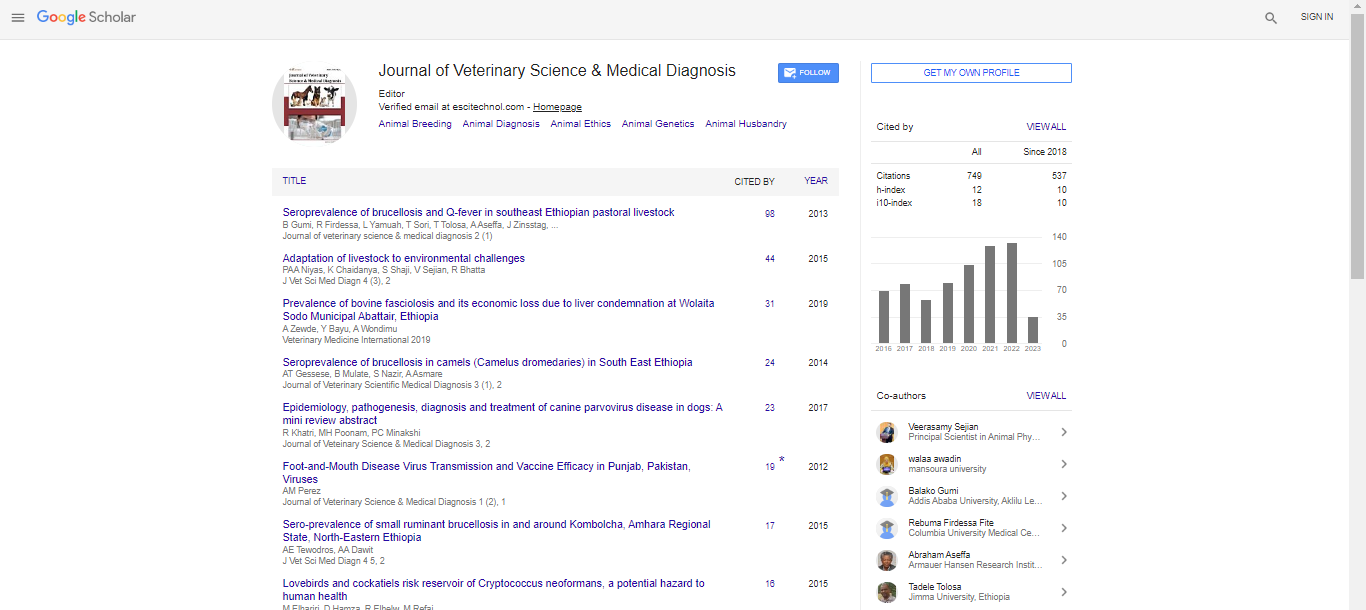The story of pulmonary veins
I-Ping Chan
National Chung Hsing University, Taiwan
: J Vet Sci Med Diagn
Abstract
Pulmonary veins drained most of oxygenated blood to left atrium from pulmonary capillaries. In fetal life, the primitive pulmonary veins from the lung buds develop from the splanchnic plexus, which communicates with the systemic venous system and connects to the left atrium. As development proceeds, the connection disappears1. If the connection persists, anomalous pulmonary venous connection (APVC) would be diagnosed depending on the degree of persistent connections1. Partial APVC refers >1 but not all pulmonary veins being connected to systemic venous circulation rather than the left atrium. Unlike with total APVC, patients with partial APVC may not show any clinical signs or show signs of cyanosis or exercise intolerance depending on the numbers of affected pulmonary veins2,3,4 . Pulmonary venous abnormality is rare in veterinary medicine and is reported sparsely in dogs, foals, cats and chickens. In 2015, it was reported that one cat with partial APVC referred for an incident heart murmur was asymptomatic5. In 2020, it was reported that a kitten with near total APVC showed refractory pulmonary edema and was decreased 2 months after the diagnosis6. In veterinary medicine, conventional radiography and echocardiography may be supportive for APVC diagnosis whereas advance diagnostic imaging, such as computed tomography angiography can provide 3-dimentional understanding. Recent Publications 1. Neill CA (1956). Development of the pulmonary veins: with reference to the embryology of anomalies of pulmonary venous return. Pediatrics 18:880-887. 2. Sears EH, Aliotta JM, Klinger JR (2012). Partial anomalous pulmonary venous return presenting with adult-onset pulmonary hypertension. Pulm Circ 2:250-255. 3. El-Kersh K, Homsy E, Daniels CJ, et al (2019). Partial anomalous pulmonary venous return: a case series with management approach. Respir Med Case Rep. 27:100833.
Biography
I-Ping Chan has her expertise in veterinary cardiology. She is the first veterinarian in Taiwan to treat dogs with congenital heart disease with cardiac catheterization. She has been worked at Veterinary Teaching Hospital National Chung Hsing University in Taiwan since 2003 when graduated from graduate school. Due to enthusiasm for Cardiology, she applied to be a visiting doctor in Cardiac Catheter Lab at Taichung Veterans General Hospital Cardiovascular Center in 2008 and spent 3 months learning cardiac catheterization. The next year, she performed the first Patent Ductus Arteriosus (PDA) coil embolization and balloon valvuloplasty in Taiwan. In 2011, she was assigned by the university to go abroad for cardiology training. she was trained at Cardiology Department at Purdue University for almost 2 years. She built up cardiology service in the teaching hospital in 2012 and performed the first case of ACDO closure of PDA in Taiwan in 2013. Now, she is the person having the most experience doing cardiac catheterization including pacemaker implantation, PDA embolism, balloon valvuloplasty and heartworm retrieval in the middle and south of Taiwan.
 Spanish
Spanish  Chinese
Chinese  Russian
Russian  German
German  French
French  Japanese
Japanese  Portuguese
Portuguese  Hindi
Hindi 
